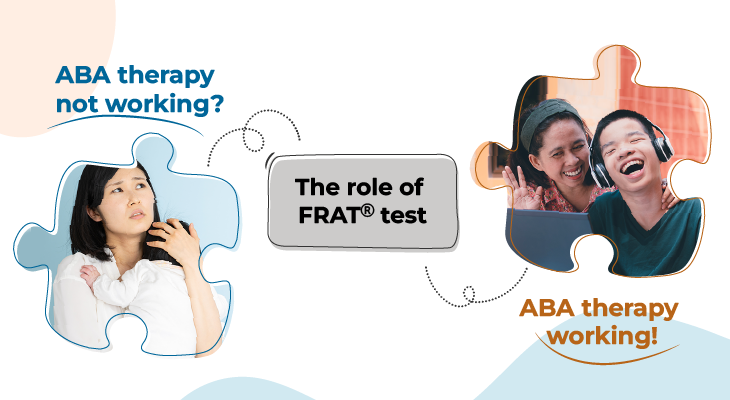Introduction
Sarah was devastated when her son was diagnosed with autism at age 2. She was initially overwhelmed and unsure of what to do. However, she quickly learned about the importance of early intervention and began seeking out therapy and support for her son. Through therapy, her son was able to develop important communication and social skills that he still uses today, as a teenager. Sarah believes that early intervention made a big difference in her son’s life and helped him reach his full potential.
If you or someone you know has a child with autism, you may be wondering why early intervention is so important. The truth is, early intervention can make a huge difference in the development and progress of children with autism. In this blog post, we’ll explore why early intervention is necessary in autism.
What is early intervention?
Early intervention involves providing targeted therapy and support to children with autism as soon as possible, ideally before the age of three. This approach is based on the idea that early intervention can help rewire the brain and promote better outcomes for children with ASD.
A good early intervention program in ASD should be comprehensive, individualized, evidence-based, family-centered, and include ongoing monitoring and evaluation. Parents and caregivers should work with trained professionals to identify the most appropriate early intervention program for their child’s unique needs.
Benefits of early intervention in autism
Several studies have shown that early intervention could lead to significant improvements in communication, social interaction, and behavior in children with ASD. For example, a randomized controlled trial published in the Journal of the American Academy of Child and Adolescent Psychiatry found that early intervention with a comprehensive program that included both behavioral and developmental approaches resulted in significant improvements in language, socialization, and cognitive skills in children with ASD.
Another study published in the Journal of Autism and Developmental Disorders found that early intensive behavioral intervention (EIBI) resulted in significant improvements in social skills, communication, and cognitive abilities in young children with ASD. The study also found that children who received EIBI had better outcomes than those who received less intensive interventions.
Types of early interventions
There are several types of early interventions that have been shown to be effective in improving outcomes for children with ASD. These interventions can include ABA, DIR, ESDM, speech therapy, and occupational therapy. It is important for parents and caregivers to work with trained professionals to determine the best interventions for their child’s unique needs.
- Applied Behavior Analysis (ABA): is a type of therapy that focuses on increasing desirable behaviors and decreasing undesirable ones. ABA therapy involves breaking down skills into small, manageable steps and teaching those skills through repetition and reinforcement.
- Developmental and Individual-Difference Relationship-Based (DIR) Model: The DIR model is a comprehensive approach that focuses on the child’s individual differences and developmental level. This approach emphasizes the importance of building a relationship between the child and therapist, as well as promoting social communication and emotional regulation.
- Early Start Denver Model (ESDM): The ESDM is a play-based intervention that combines developmental and behavioral approaches. The ESDM has been shown to be effective in improving language, social communication, and cognitive abilities in young children with ASD.
- Speech Therapy: Speech therapy focuses on improving communication skills, including language and speech.
- Occupational Therapy (OT): OT focuses on developing the skills needed for daily living, such as fine motor skills, self-care, and sensory integration.
Studies have shown that these types of early interventions can be effective in improving outcomes for children with ASD. For example, a randomized controlled trial of the Early Start Denver Model found significant improvements in language, social communication, and cognitive abilities in young children with ASD who received this intervention compared to those who received community-based interventions (Dawson et al., 2010).
Do the outcomes of early intervention last over time?
Several studies have found that children who receive early intervention for ASD continue to demonstrate improvements in their language and social skills several years after the intervention has ended. For example, a study published in the Journal of the American Academy of Child and Adolescent Psychiatry found that children with ASD who received early intervention using the Early Start Denver Model (ESDM) showed significant improvements in language and social skills after two years of follow-up (Dawson et al., 2012).
Another study published in the Journal of Child Psychology and Psychiatry found that children with ASD who received early intervention using Applied Behavior Analysis (ABA) showed sustained improvements in social communication and behavior after four years of follow-up (McEachin et al., 1993).
Long-term outcomes of early intervention may depend on a variety of factors, such as the intensity and duration of the intervention, the child’s individual needs and characteristics, and the quality of ongoing support and services.
Conclusion
Early intervention is necessary in autism because it can help with early identification and diagnosis, help children develop important skills, reduce the severity of symptoms, and provide support and resources to families. If you suspect that your child may have autism, it’s important to seek a professional evaluation as soon as possible. The earlier you can begin providing support and therapy, the better the outcomes may be for your child.
For information on autism monitoring, screening and testing please read our blog.
References
- Dawson, G., Rogers, S., Munson, J., Smith, M., Winter, J., Greenson, J., Donaldson, A., & Varley, J. (2010). Randomized, controlled trial of an intervention for toddlers with autism: the Early Start Denver Model. Journal of the American Academy of Child and Adolescent Psychiatry, 49(10), 1042-1052.e1.
- Dawson, G., Jones, E. J. H., Merkle, K., Venema, K., Lowy, R., Faja, S., … & Webb, S. J. (2012). Early behavioral intervention is associated with normalized brain activity in young children with autism. Journal of the American Academy of Child & Adolescent Psychiatry, 51(11), 1150-1159.
- Eldevik, S., Hastings, R. P., Hughes, J. C., Jahr, E., Eikeseth, S., & Cross, S. (2009). Meta-analysis of early intensive behavioral intervention for children with autism. Journal of Autism and Developmental Disorders, 39(10), 1540-1552.
https://www.researchgate.net/publication/24422642_Meta-Analysis_of_Early_Intensive_Behavioral_Intervention_for_Children_With_Autism - McEachin, J. J., Smith, T., & Lovaas, O. I. (1993). Long-term outcome for children with autism who received early intensive behavioral treatment. American Journal of Mental Retardation, 97(4), 359-372.





